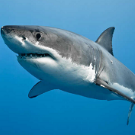Jeju Air Flight from Bangkok Skids Off Runway at Muan Airport, 28 Dead
-
Recently Browsing 0 members
- No registered users viewing this page.
-
Topics
-
-
Popular Contributors
-
-
Latest posts...
-
130
Things thai people do that make no sense
most "manners" were adopted by Georgian royalty in Britain to keep te aristocrats under control.... -
18
Leftist Oligarchs demand Dems “Get Shot ” for Democracy!
Fox news lady asks how far will the dems go! She has a bad memory! September 15, 2024. The guy had a Biden / Harris Sticker on his car bumper! -
130
Things thai people do that make no sense
Pull their motorbike away from the kerb into traffic, before starting the engine....very minor ... but also very stupid.... -
7
Zarah Sultana says she is quitting Labour to start party with Corbyn
There is already a thread running on this topic: -
105
Leftists continue to be wrong and still have the nerve to keep making predictions
I have time to waste, even though we all know its either hatespew or just a based faced lie. Finished it for you -
130
Things thai people do that make no sense
That's true. And I was recently told that all these 'polite nothings' (like when an American buying a coke at 7/11 says 5 or 10 times 'thank you') were not the norm in my home-country either, about 100 years ago.
-
-
Popular in The Pub













Recommended Posts
Create an account or sign in to comment
You need to be a member in order to leave a comment
Create an account
Sign up for a new account in our community. It's easy!
Register a new accountSign in
Already have an account? Sign in here.
Sign In Now